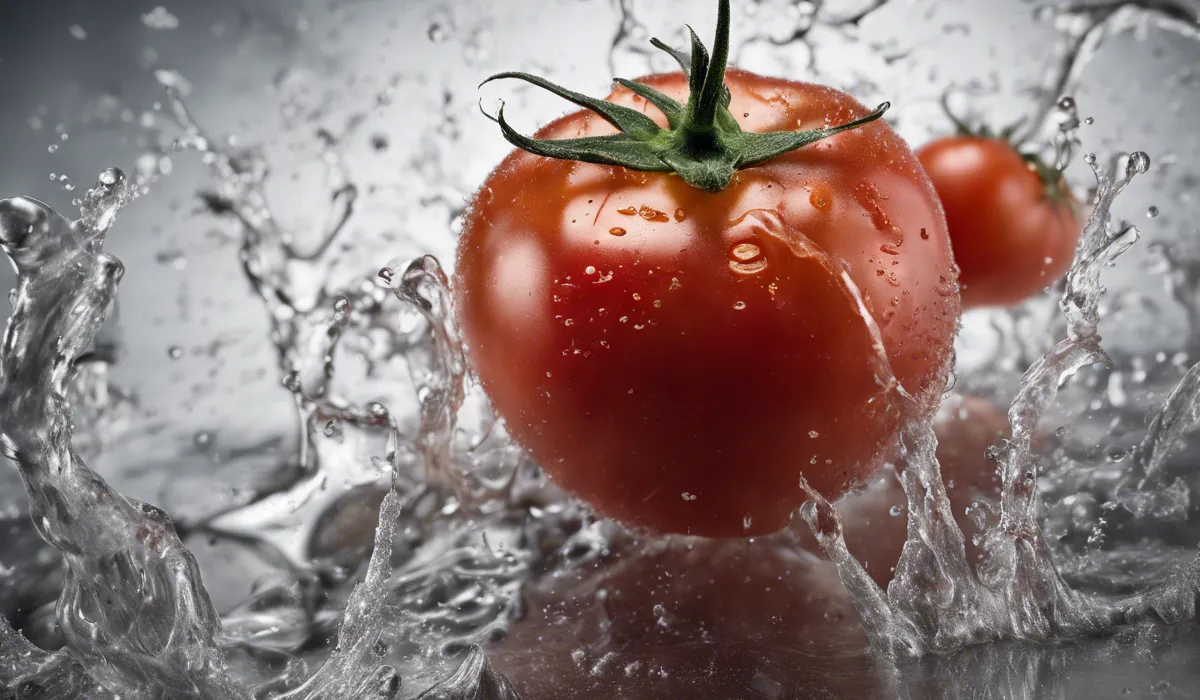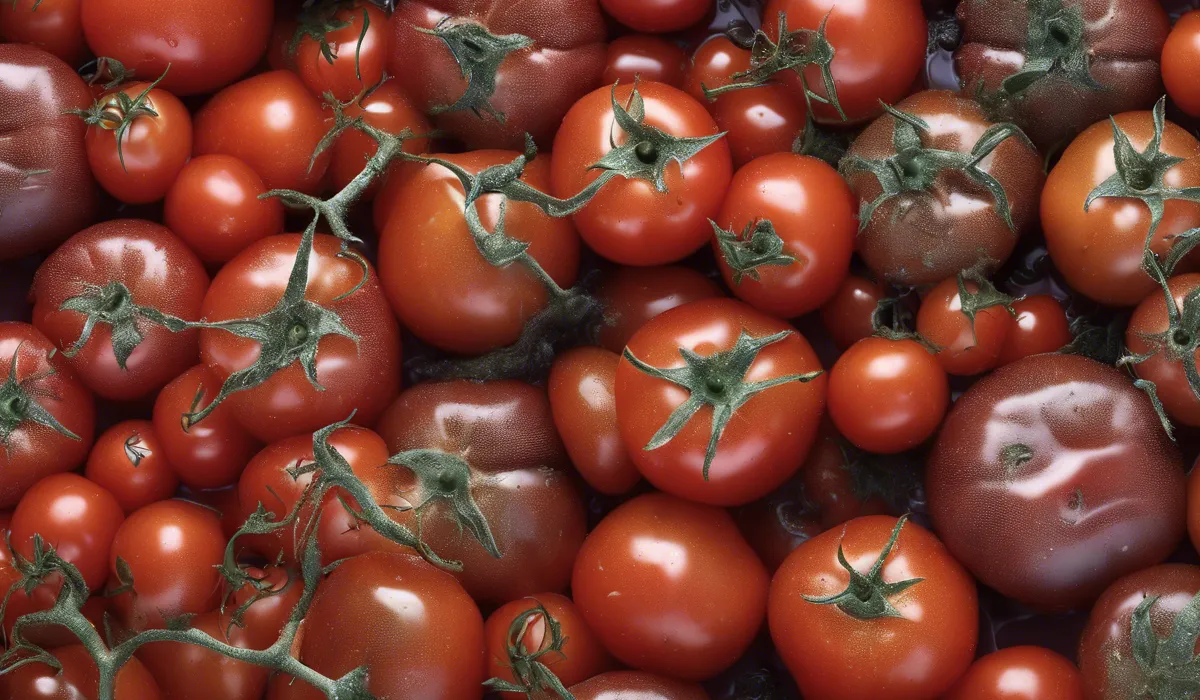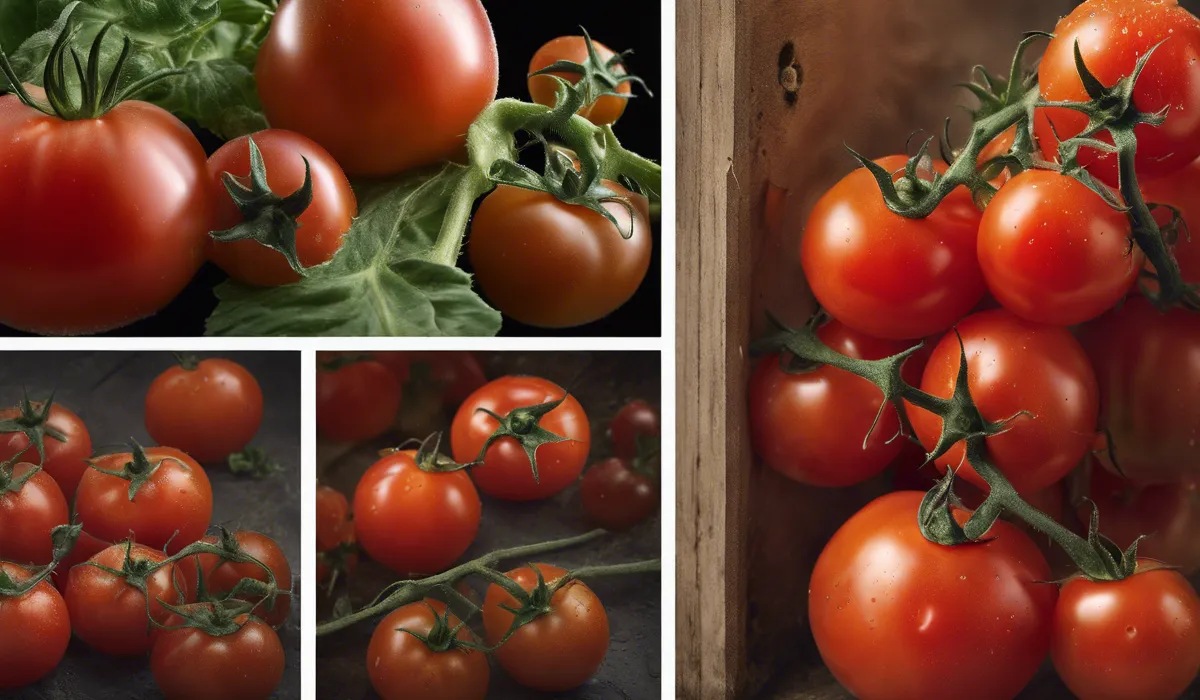No, you should not use tomatoes with mold. Mold can penetrate deeper into soft fruits like tomatoes, spreading harmful toxins. Discard moldy tomatoes to avoid health risks.
Risks of Using Moldy Tomatoes

Understanding Mold and Its Varieties
Mold is a type of fungus that can grow on various surfaces, including food. There are thousands of mold species, each with unique characteristics.
Some common types found on food are Penicillium, Aspergillus, and Rhizopus. These molds can appear as fuzzy or slimy spots in different colors like white, green, or black.
Health Risks of Consuming Moldy Food
Mycotoxins and Health
Mycotoxins are toxic substances produced by some molds. They can cause a range of health issues, from mild stomach upset to severe reactions, including liver damage and cancer.
These toxins can remain in the food even after the mold is removed, making it unsafe to eat.
Allergies and Respiratory Problems
Mold can trigger allergic reactions and respiratory issues in sensitive individuals. Symptoms may include sneezing, coughing, and difficulty breathing.
It is crucial to avoid moldy foods if you have known allergies or asthma.
Risks Specific to Tomatoes
Tomatoes are particularly susceptible to mold because of their high moisture content. Consuming moldy tomatoes can lead to the ingestion of harmful mycotoxins, potentially causing food poisoning and other health complications.
Surface Mold vs. Deep-Rooted Mold
Surface mold may appear to only affect the outer layer of a tomato, but it can have deep roots that penetrate the flesh.
Unlike harder foods where you might cut away the moldy part, mold on tomatoes often means the entire fruit is compromised.
USDA Guidelines on Moldy Food
The USDA advises discarding soft fruits like tomatoes when mold is present. They recommend being cautious with moldy foods, as the risks of consuming mycotoxins or causing allergic reactions are high.
It’s better to err on the side of safety and throw away moldy tomatoes.
Identifying and Handling Moldy Tomatoes

Spotting Mold on Tomatoes
Mold on tomatoes often starts as small, white spots that can quickly spread and change color. Watch for these early signs to catch mold before it becomes a bigger problem.
Scent and Texture Changes
A moldy tomato may develop a sour or off smell, and its texture might become softer or mushier than usual. If you notice these changes, it’s best to discard the tomato immediately.
Handling Moldy Tomatoes Safely
When dealing with moldy tomatoes, wear gloves and avoid touching other food or surfaces to prevent cross-contamination. Place the moldy tomato in a plastic bag and seal it before discarding it in the trash.
Proper Disposal of Moldy Tomatoes
After disposing of the tomato, clean any surfaces it may have touched with a mild bleach solution or anti-bacterial cleaner to ensure all mold spores are killed.
Preventing Mold on Tomatoes

Storing Tomatoes Correctly
Temperature and Humidity Control
Keep tomatoes in a cool, dry place to slow down the growth of mold. Refrigeration is not always necessary, but if you do refrigerate them, place them in the crisper drawer away from moisture.
Separation Techniques
Tomatoes release ethylene gas, which can hasten the ripening and potential spoilage of other produce. Store them separately to prevent this and to reduce the spread of any potential mold.
Cleaning and Preparing Tomatoes
Wash tomatoes thoroughly under running water before storing or using them. This can help remove any potential mold spores and bacteria that might cause spoilage.
When to Cut Away Mold?
For harder vegetables and cheeses, you might cut away the moldy part and use the rest. However, with tomatoes, this is not safe due to their soft nature and the ability of mold to penetrate deeply.
Using Tomatoes on the Verge of Spoiling
If tomatoes are starting to spoil but aren’t moldy, consider using them in cooked dishes like sauces or soups, where they will be heated thoroughly, killing any potential bacteria.
FAQs About Using Tomatoes with Mold
Can you cut off the moldy part of a tomato and use the rest?
No, you should not use the rest of a moldy tomato as the mold can spread beyond the visible parts, posing health risks.
Is it safe to eat around the mold on a tomato?
No, it’s not safe to eat parts of a tomato that appear unaffected by mold because harmful toxins could have spread throughout the fruit.
What should you do with a tomato that has mold on it?
You should discard a tomato that has mold on it to avoid the risk of consuming harmful toxins.
Can mold on a tomato make you sick?
Yes, consuming mold on a tomato can make you sick due to potential toxins and allergens in the mold.
Are some molds on tomatoes safe to eat?
No, molds on tomatoes are generally not safe to eat, as they can produce toxins that may cause illness.
Final Thoughts
It is imperative to avoid using moldy tomatoes. Due to their soft nature, the mold likely extends beyond the visible surface, potentially carrying dangerous toxins.
To safeguard your health, it is best to discard any tomatoes that show signs of mold.
